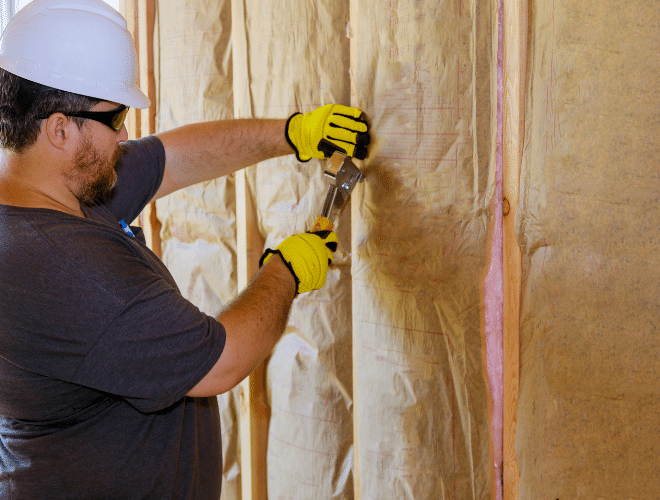In the pursuit of constructing energy-efficient homes, thermal bridging stands as a significant challenge for home builders. This phenomenon, where heat escapes through more conductive materials in the building envelope, can severely compromise a home’s thermal performance. At TSI Energy Solutions, we understand the importance of addressing thermal bridging prevention to ensure the highest standards of energy efficiency and occupant comfort. In this blog post, we’ll explore essential techniques for preventing thermal bridging, tailored specifically for home builders.
Understanding Thermal Bridging Prevention
Thermal bridging occurs when materials with high thermal conductivity, such as steel, concrete, or wood, create a pathway for heat to bypass insulation. This results in heat loss during winter and heat gain during summer, leading to increased energy consumption and higher utility bills. Additionally, thermal bridging can cause condensation and mold growth, compromising indoor air quality and the structural integrity of the building.
The Impact of Thermal Bridging on Energy Efficiency
For home builders, minimizing thermal bridging is crucial to achieving energy-efficient buildings. Unaddressed thermal bridges can negate the benefits of high-quality insulation and advanced heating and cooling systems. By effectively managing thermal bridging, builders can enhance the overall energy performance of homes, contributing to sustainability goals and providing long-term savings for homeowners.
Key Techniques for Preventing Thermal Bridging
Continuous Insulation
Continuous insulation (CI) is a method where a continuous layer of insulation is installed on the exterior of the building envelope, covering all structural components. This approach eliminates gaps and reduces thermal bridging. Rigid foam boards, mineral wool, and spray foam are popular materials for continuous insulation.
Thermal Breaks
Implementing thermal breaks involves inserting materials with low thermal conductivity, such as insulating foam or plastic spacers, between structural components. For example, using thermal breaks in metal framing or window assemblies can significantly reduce heat transfer.
Advanced Framing Techniques
Advanced framing techniques, such as spacing studs at 24 inches on center and using single top plates, can reduce the amount of thermal bridging in walls. These methods also decrease the amount of lumber used, improving the overall thermal efficiency of the structure.
High-Performance Windows and Doors
Windows and doors are common sources of thermal bridging. Selecting high-performance windows and doors with low-emissivity (low-E) coatings, multi-pane glazing, and insulated frames can minimize heat transfer. Proper installation with air-sealing techniques is also crucial to prevent air leakage around these openings.
Insulated Sheathing
Insulated sheathing, such as foam board or structural insulated panels (SIPs), can be applied to the exterior of the building envelope. This additional layer of insulation helps to cover and eliminate thermal bridges created by studs and other framing members.
Thermal Mass
Utilizing materials with high thermal mass, such as concrete or brick, can help regulate indoor temperatures by absorbing and releasing heat slowly. While not a direct solution for thermal bridging, thermal mass can complement other strategies to improve overall energy efficiency.
Proper Air Sealing
Air sealing is a critical component of thermal bridging prevention. Gaps, cracks, and joints in the building envelope can allow air and heat to bypass insulation. Using high-quality sealants, gaskets, and tapes to seal these areas can enhance the thermal performance of the building.
Infrared Thermography
Infrared thermography is a diagnostic tool that helps identify thermal bridges and areas of heat loss in a building. By conducting thermal imaging scans, builders can pinpoint problem areas and implement targeted solutions to address thermal bridging.
Additional Benefits of Addressing Thermal Bridging
Enhanced Indoor Comfort
By minimizing thermal bridging, home builders can ensure more consistent indoor temperatures. This leads to greater occupant comfort, reducing hot and cold spots within the home.
Reduced Moisture Issues
Addressing thermal bridging helps prevent condensation on interior surfaces, which can lead to mold growth and structural damage over time. Properly insulated and sealed homes are less prone to these moisture-related problems.
Increased Property Value
Homes built with advanced thermal bridging prevention techniques are more attractive to energy-conscious buyers. These homes often command higher market prices due to their superior energy performance and reduced operating costs.
Meeting Building Codes and Standards
Many building codes and standards now require strict thermal performance criteria. By incorporating thermal bridging prevention strategies, homebuilders can ensure compliance with these regulations, avoiding potential fines and construction delays.
Building for the Future
Preventing thermal bridging is essential for home builders aiming to construct energy-efficient and sustainable homes. By employing techniques such as continuous insulation, thermal breaks, advanced framing, and high-performance windows and doors, builders can minimize heat transfer and enhance the overall thermal performance of buildings. At TSI Energy Solutions, we are committed to providing expert guidance and solutions for thermal bridging prevention, ensuring that your projects meet the highest standards of energy efficiency and occupant comfort.
For more information on our services and how we can assist you in your next project, contact us today. Let’s work together to build a more sustainable future, one energy-efficient home at a time.

